Nazi Germany's siege of Russia's former capital lasted 872 days, claiming the lives up to a million civilians and about half-a-million soldiers. Eighty years ago, in a colossal military effort, a breach was made in the blockade of the city: Operation Iskra opened a narrow, bare, exposed, but nevertheless operational land corridor from the 'mainland.'
This was the first relatively successful attempt to break through the Nazi lines after four catastrophic failures over the previous years. The success of the operation was incredibly important, but the victory took such a toll and is associated with so much indescribable grief and destruction that, even in Russia, it is recalled very rarely.
Superfluous city
According to Germany's plan for the Eastern Front, the initial task of Army Group North was to capture Leningrad by mid-September 1941. This turned out to be impossible. The mobilization of the civilian population to build defensive lines to the south of the city (mostly women, as men were either employed in factories or went to the front) and the stubborn resistance put up by the Red Army prevented the Germans from taking it by storm. Not wanting to waste time and effort on the 'doomed' city, as it seemed at the time, Franz Halder, chief of staff of the Nazi ground forces, convinced Adolf Hitler to move tanks and mechanized units towards Moscow, and leave Leningrad under blockade.
It was assumed that, after a hungry and cold winter, its defenders would no longer have the strength to resist. The city would be captured and razed to the ground, and all the lands to the north of the Neva River, which flows through the city into the Baltic Sea, would be given to the Germans' Finnish allies, who were securing their blockade sector. In encircling the city, the last railway line was cut near the Mga station on August 29, 1941, just two months and one week after the war began. September 8 saw the capture of Shlisselburg, 12km to the north on Lake Ladoga at the source of the Neva River. Supplies could potentially have been transported from here to Leningrad. The blockade of the northern capital is counted from this date.
Almost immediately after it was founded by Emperor Peter I in 1703, Saint Petersburg became Russia's main commercial port and naval base. Wide avenues, cathedrals, the stunning beauty of the palaces of the imperial family and other nobles, as well as drawbridges over the wide Neva River, still remain a reminder of Russia's grand history. But by the end of the 19th century, the city had also become the country's main manufacturing center, retaining its industrial significance even after the Bolsheviks, who came to power in 1918, moved the capital to Moscow. In addition, both Adolf Hitler and Joseph Stalin recognized the city's ideological importance, since it was here that the first socialist revolution had taken place, and the city itself had been renamed in honor of the leader of the global proletariat, Vladimir Lenin.
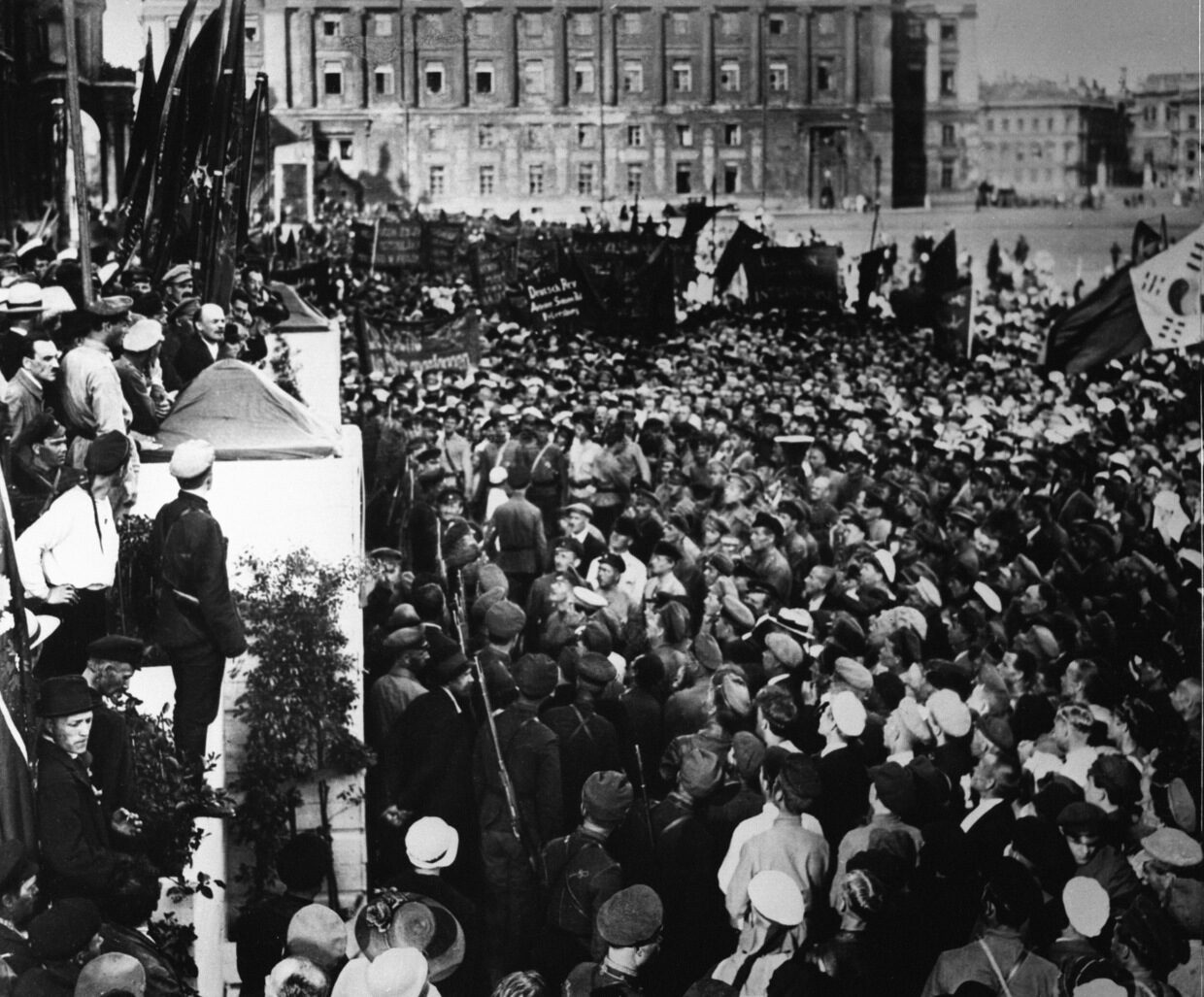
Hell on ice
Due to the Red Army's disastrous start to the war and the general chaos in the country's administration, Leningrad was absolutely unprepared for the siege. It was impossible to carry out a fully fledged evacuation of the city's three million residents along just two railway lines in a relatively short time, and military enterprises were evacuated first.
Children were also sent away to protect them from bombing and artillery shelling. However, Leningrad's youngest residents were not taken inland, but to suburbs and villages near the city, from which most of them soon returned.
No significant stocks of food had been created, and warehouses had been destroyed by German aircraft on September 8-10, when the blockade was established. By October, rations for residents who neither worked in factories nor fought in trenches had already been reduced to a catastrophic 125 grams of bread per day, and real famine set in as early as November. Cases of cannibalism were recorded and investigated in the city during the entire period of the siege, their number entering the hundreds. However, given the inhuman conditions in which millions of Leningraders found themselves, this is not as unconscionable as it may seem.
Of course, the situation was aggravated by the cold. The winter of 1941 turned out to be the chilliest in recorded history. The average daily temperature had already dropped to 0°C by October 11 and did not rise above freezing until April 7. Fuel reserves in the northern capital quickly ran out, and the electricity supply fell to 15% of the pre-war level. The central heating was turned off, and sewage and water supply systems froze. People put small cast-iron stoves in their apartments and heated them with everything they had, including furniture, flooring, wallpaper, and books.
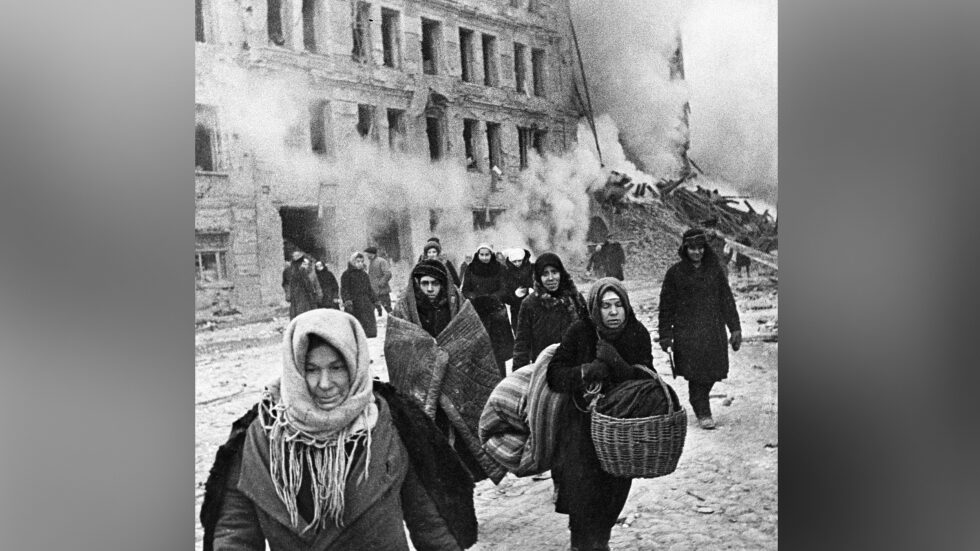
Survivors of genocide
Imagine: You wake up in the only warm room of a huge Leningrad apartment. All movement is difficult; your head is foggy due to hunger. You don't need to get dressed, as you've slept in a padded jacket. You drink leftover water from a bucket taken from the well yesterday. You wrap yourself up more tightly and set off for your factory halfway across the city - public transport stopped working long ago. Supplementary nutrition is organized at the factory; it gives you a chance to survive. In the hallway, a smell hits your nose - a corpse lies under the stairs, for the third day - you don't want to look. On the way to work, you meet people hauling sleds laden with the bodies of their relatives. They weave their way between snowdrifts and stationary trolleybuses so they can bury the dead. But none of this evokes any emotion anymore - during the endless months of this winter, about a million people have perished around you. You have already lost all hope - you live on autopilot and know this fate could soon befall you as well. Hundreds of thousands of people went through this and kept the trauma in their memory, although they preferred not to voice their recollection of all the horrors.
In terms of brutality, scale, and planning, the siege of Leningrad is quite comparable to the most infamous acts of genocide, including the 'final solution of the Jewish question,' as the Germans were fully aware of the consequences of their actions. And while, for a number of reasons, the Soviet leadership failed to draw attention to this, including in the international arena, in October of 2022, the Saint Petersburg City Court finally called a spade a spade and recognized the siege as genocide.
"Just recently, the blockade of Leningrad was also recognized as an act of genocide. It was high time to do it. By organizing the blockade, the Nazis purposefully sought to destroy the Leningraders - everyone from children to the elderly. This is also confirmed, as I have already said, by their own documents," Vladimir Putin noted in November 2022. Though Russia's current president was born ten years after the Leningrad blockade was finally broken, his family was directly affected by this tragedy.
At the beginning of the blockade, the one-and-a-half-year-old son of Vladimir Putin's mother, Maria Ivanovna, was taken away for evacuation, but he never made it out of the city. According to the official account, the child, Viktor, died of an illness. The only notification his mother received about this was a death certificate. As the Russian leader himself said, she only managed to survive due to the fact that her husband, Putin's father, had been wounded at the front and received augmented rations, which he passed on to his wife during her daily visits to the hospital. This continued until he fainted from hunger, and the doctors, who understood what was happening, forbade further visits. After leaving the hospital on crutches with a shattered leg, he nursed his wife, who had stopped walking from weakness. Vladimir Spiridonovich had fought on the Neva Bridgehead.
Attacking over comrades' corpses
According to the memoirs of Georgy Zhukov, who repulsed an attempt to storm Leningrad in September-October 1941, Stalin initially considered the city's situation nearly hopeless and was more focused on saving Moscow. But the desperate resistance of the city's defenders, the steadfast perseverance of its inhabitants, and later the heroism of the brigades that transported scarce food supplies to Leningrad in trucks and carts along the city's sole lifeline - the 'Road of Life' established on the ice of Lake Ladoga - forced the Bolshevik leader to change his mind. At that point, he began to demand that his military leaders break through the defense by any means and as soon as possible. The impatience of the Georgian, who had had the leadership of the Western Front shot just two months before, led to a number of hasty and ill-prepared attempted to break the blockade.
What was the German 'wedge' that penetrated to Lake Ladoga and cut Leningrad off from the rest of the country? It was a low-lying 15km x 15km area consisting mostly of woods and peat bogs, but in its very center was a hill on which the village of Sinyavino stood. To the west, the site was bounded by the wide (about 500 meters) Neva River, behind which the defending troops of the Leningrad Front were positioned. To the east was the Volkhov Front; to the north, the shores of Lake Ladoga; and to the south, the main part of Germany's Army Group North.
During Stalin's industrialization of the 1930s, a large condensing power plant had been built on the banks of the Neva River. Peat was dug from the marshes to provide fuel. Workers lived in several scattered villages connected by dirt roads and narrow-gauge railways. In the north, there was the ancient fortress city of Shlisselburg; in the south, deep behind the German lines, was a railway junction at the Mga station. The attempts to break the siege of Leningrad are conventionally called the Sinyavino Offensives.
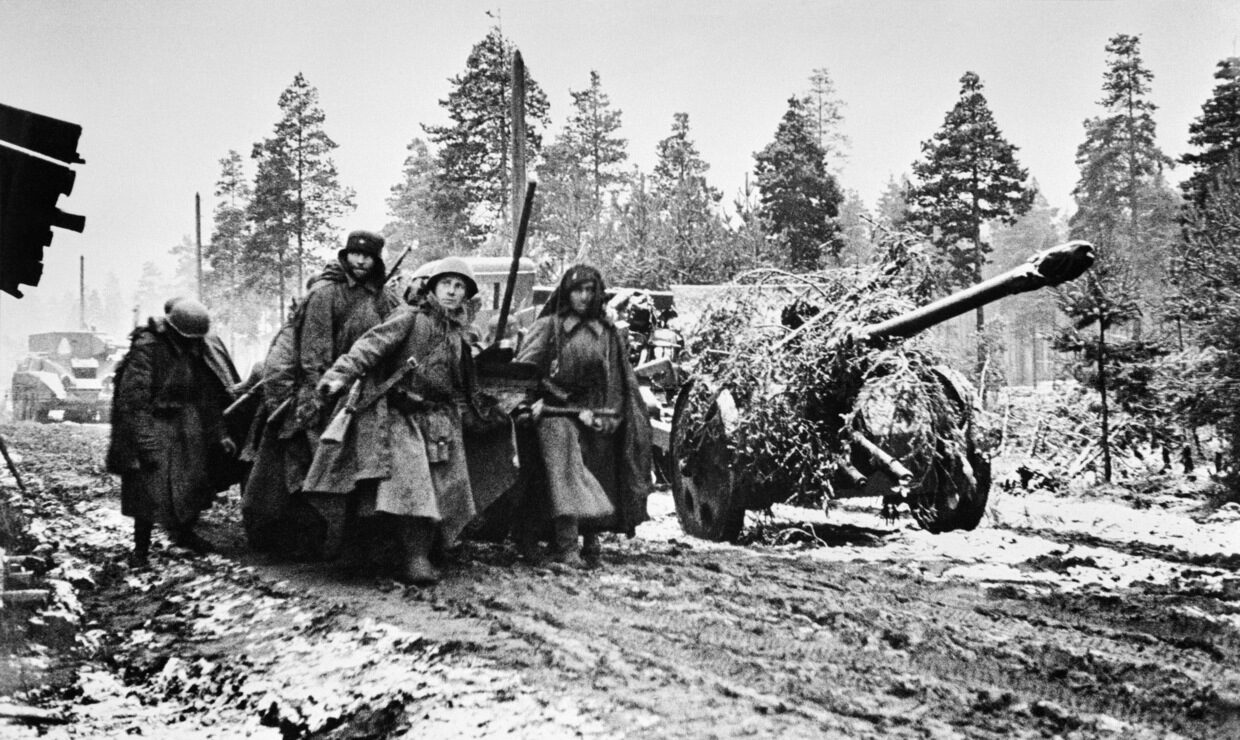
The Neva Bridgehead was constantly changing in size, with a width of up to 2km and a depth of about 800 meters. Although the relative narrowness of the river allowed boats to bring in reinforcements, albeit over icy water and under constant shelling (one in five made it), the bank itself was absolutely unsuitable for staging a further offensive. From the north, it was bounded by the huge power plant, which the Germans quickly turned into a fortress. From the east, it abutted two sand pits, through which it was impossible to launch an attack or conduct maneuvers. The bridgehead was under constant fire from enemy artillery and machine guns. However, this did not stop the generals - they demanded frontal attacks and successes that they could report to Stalin.
Between September 19, 1941 and April 29, 1942, and September 26, 1942 and February 17, 1943, countless regiments and divisions cycled through the bridgehead, and over 50 hopeless attempts were made to advance towards Sinyavino and Mga to breach enemy lines. In 1941 alone, during the first and second Sinyavino operations, at least 68,000 people died on this small piece of land. It was nearly impossible to evacuate wounded soldiers, let alone corpses, across the river. When bodies were buried, they were buried right there, sometimes more than once, since incessant artillery fire (up to 50,000 shells, grenades, and aerial bombs per day) kept churning up the earth and exposing dead bodies. Winter temperatures made it impossible to dig pits in frozen ground, and frozen corpses were used instead of logs to reinforce trench walls or shelter roofs and make loopholes.
"All of that against the constant backdrop of our and German artillery fire, the unmistakable smell of mortar shell explosive, the repulsive sound of German ground-attack planes, the moans of the wounded, and the swearing of the living, who were cursing the Germans, the war, this wretched bridgehead, and sometimes our gunners if they were firing on our own positions," according to Yuri Poresh, a soldier who survived the fighting.
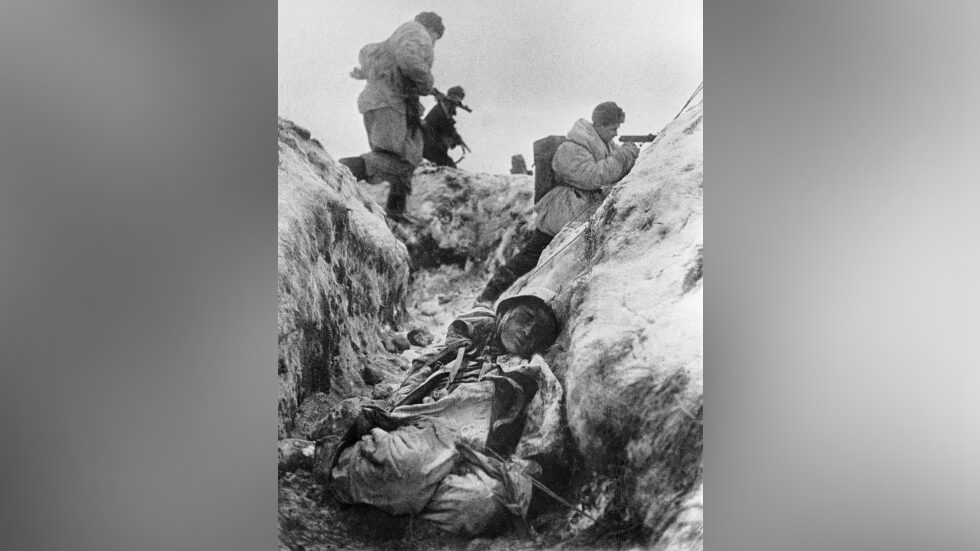
The scale of suicidal losses suffered in this area was not properly recognized until after the war. Back then, thoughts were focused on saving Leningrad from the disastrous siege.
The Birth of a Traitor
Fighting at the Sinyavino wedge was no walk in the park for the Germans either. They had to repel countless waves of Soviet attacks from two opposite directions. Continuous artillery fire soon obliterated almost every tree in that spot, so all Wehrmacht soldiers could see from their fortified positions, especially from the Sinyavino heights, were swamps, which never froze even in winter, scarred by heavy artillery fire, laid with mines, and littered with the corpses of Red Army infantry soldiers with an occasional burnt tank here and there. Further south, at the entrance to the Demyansk Pocket, whose defense by the Germans was closely linked to the defense of the Sinyavino wedge, there was a handmade road sign which said, in German: "Welcome to hell." The Germans must have been thinking similar thoughts about Sinyavino, which looked like something out of Hieronymus Bosch's disturbing paintings.
After victory near Moscow, followed by a counteroffensive, Stalin demanded again that the siege be lifted, which led to the notorious Lyuban offensive operation that took place between January 7 and July 10, 1942. Its purpose was to cut off the whole of the Sinyavino wedge south of Mga and, by doing so, not only relieve the siege of Leningrad but also seize the strategic initiative in the north. Created specifically for this operation, the 2nd Shock Army succeeded in breaking through German defenses. However, due to the lack of roads, adequate supplies, and sufficient reinforcements, as well as the incompetence of Mikhail Khozin, the commander of the Leningrad Front, it was forced to halt its advance before being gradually encircled and destroyed. On April 20, almost by accident, Andrey Vlasov, a hero of the Battle of Moscow and one of the generals Stalin respected the most, was put in charge of the 2nd Shock Army to relieve its ailing commander.
By then, the army was all but doomed. When the high command finally allowed the army to retreat, it was too late, as the encirclement had been completed. After giving his last orders, Vlasov attempted to escape on his own, as he had done near Kiev in the summer of 1941, but was captured and identified. He would go on to lead the collaborationist Russian Liberation Army and become the epitome of a traitor. A total of approximately 350,000 soldiers and officers perished in the disastrous operation.
Last setbacks
A month later, in late August 1942, the Red Army began the 3rd Sinyavino operation in another attempt to lift the siege. This time, the Leningrad Front was in the hands of Leonid Govorov, a much more capable general and a meticulous artillery officer. The commander of the Volkhov Front was Kirill Meretskov, an experienced general who had fought in Spain and been tasked with penetrating the Mannerheim Line in the Winter War. Up against them was Georg Lindemann's German 18th Army, which included, among other units, the 250th Blue Division of Spanish volunteers.
However, given the local landscape, the mission still looked nearly impossible to accomplish. "Soldiers had to build fences out of wood and dirt instead of digging trenches for their fighting positions and living quarters. Instead of foxholes, they piled earth to build open platforms, laid log roads for many kilometers, and constructed wooden platforms for artillery guns and mortars... The vast peat bogs stretching from the banks of Lake Ladoga all the way to Sinyavino and, south of Sinyavino, the dense woods with large swamps, almost impenetrable even for the infantry, were severely limiting the troops' maneuverability and created more advantages for the defending side," Meretskov later wrote.
The new attempt, which had been planned much more thoroughly, called for several waves of advancing troops supported by heavy artillery fire and flame tanks to destroy enemy fortifications. The operation could have been a success but, in August, the Germans were reinforced by the 11th Army, which had emerged victorious from the bloody Battle of Sevastopol. It was led by Erich von Manstein, one of Hitler's top generals.
Von Manstein was initially expected to replicate his Crimean success in Leningrad. However, as the situation near Sinyavino was beginning to look increasingly dire, the German leadership told him to check the Russian offensive, which he did. It looked like another setback for the Red Army, which lost over 100,000 people, 40,000 of whom were irrecoverable casualties, yet it succeeded in averting the Wehrmacht's attack on Leningrad and weakened the 11th Army so that later, when it was sent to Stalingrad, it failed to break the encirclement around Paulus' doomed 6th Army.
The spark that burned through armor
The 3rd Sinyavino operation allowed Govorov and Meretskov to gain a better understanding of the terrain and enemy capabilities. Stalin suggested that the next operation should be codenamed Iskra, or "Spark" (the idea being that it would finally set the siege ablaze). What set the fifth attempt at lifting the siege apart from the previous efforts was the meticulous planning that went into it and the special training the troops received.
For example, soldiers practiced crossing the Neva at spots inside the city where the enemy could not observe them. Artillery fire was supposed to take out all of the enemy's firing positions on the left bank. To achieve that, one of the soldiers, who was a painter before the war, came to the frontlines several nights in a row and carefully examined the German defenses before returning to the headquarters and depicting everything he had seen and committed to memory on a canvas four meters wide. The picture was then used for reference by artillery officers.
Logs held together by metal spikes were initially intended to help medium and heavy tanks to traverse the river. After the first two tanks sank during practice, it became clear that the wooden "rails" had to be given about 24 hours to become stuck to the ice before they could be used. Figuring out such nuances, combined with the surprise factor, was instrumental in ensuring the success of the operation.
Attacking from the west along the southern bank of Lake Ladoga was the 67th Army under the command of Mikhail Dukhanov, who began his military service before the revolution as a pontonier. Moving from the east was the unfortunate 2nd Shock Army, now put together for a third time, led by Vladimir Romanovsky. It numbered 164,000 men and had received a significant boost in terms of armor and artillery. Just two months prior, only 4,600 troops remained after defeat in the 3rd Sinyavino operation. It was in this army's sector that the Germans' defenses were exceptionally formidable. They built several lines of fighting positions linked by pairs of walls made of earth and wood with water poured over them to make them icy. There was a total of over 400 emplacements for artillery and machine guns complete with minefields in front of and between them.
Ivan Fedyuninsky, deputy commander of the Volkhov Front, who was made responsible for the overall coordination of Operation Iskra, had 302,000 men under his command, five times the size of the German troops at Sinyavino. The first stage called for creating a land connection to Leningrad, the second phase was aimed at capturing Mga, a vital communications node, to establish a railway link with Russia's central regions.
Breakthrough at last
The operation was initially planned for early December. However, since the Neva was slow to freeze due to a relatively mild winter, the offensive was postponed by a month. On January 12, 1943, after an aerial bombing attack at dawn and two hours of artillery barrage, the two fronts began advancing towards each other through a 12km-wide corridor. Significant headway was made in the west, where the blow, contrary to the Germans' expectations, was delivered not at, but to the north of, the Neva Bridgehead. The advancing troops secured a position on the left bank of the Neva measuring 6km by 3km on the very first day.
Achievements in the east were more modest. Over the next four days, the advance slowed and turned into trench warfare. The Red Army stormed German fortifications in the workers' villages as the Wehrmacht sent in reinforcements. Those days saw the first deployment of the Tiger. One of those heavy tanks, which were still a rarity, was captured and carefully studied, which allowed Soviet and Allied armored soldiers to identify its vulnerabilities and learn how to deal with it effectively.
At last, on the morning of January 18, advance units of the two fronts met south of Workers' Village No. 5, located on the railway line connecting Sinyavino and Schlisselburg, repelled a German counterattack, and broke into the fortified village itself by midday. Realizing the urgency of the situation, the German command ordered the Schlisselburg garrison to leave, with about 8,000 soldiers and officers successfully escaping from the encirclement. By January 20, a land corridor about 10km wide running south of Lake Ladoga had been cleared of enemy forces, which dug in at the Sinyavino Heights. Further attempts, which lasted until April, to dislodge them were just as bloody as they were futile, meaning Operation Iskra failed to reach its second objective. The Germans left Sinyavino a year later, in January 1944, as part of their widescale retreat.
That did not matter much to the survivors in Leningrad so long as the horrible siege was over at last. The construction of a railroad running through the corridor - which had to be constructed in clear view of Sinyavino and could be reached by German artillery fire - began immediately on January 18. It took just 17 days to build a 33km stretch working only after nightfall in freezing temperatures, upon which the Road of Victory was used to deliver supplies to Leningrad and evacuate survivors. Russia's northern capital and the cradle of the Bolshevik Revolution was saved.
By Anatoliy Brusnikin, Russian historian and journalist
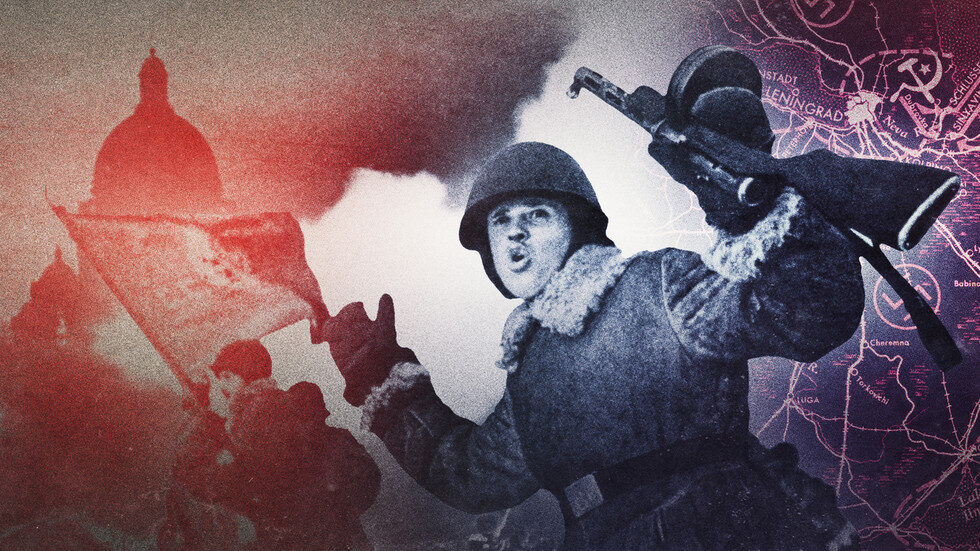
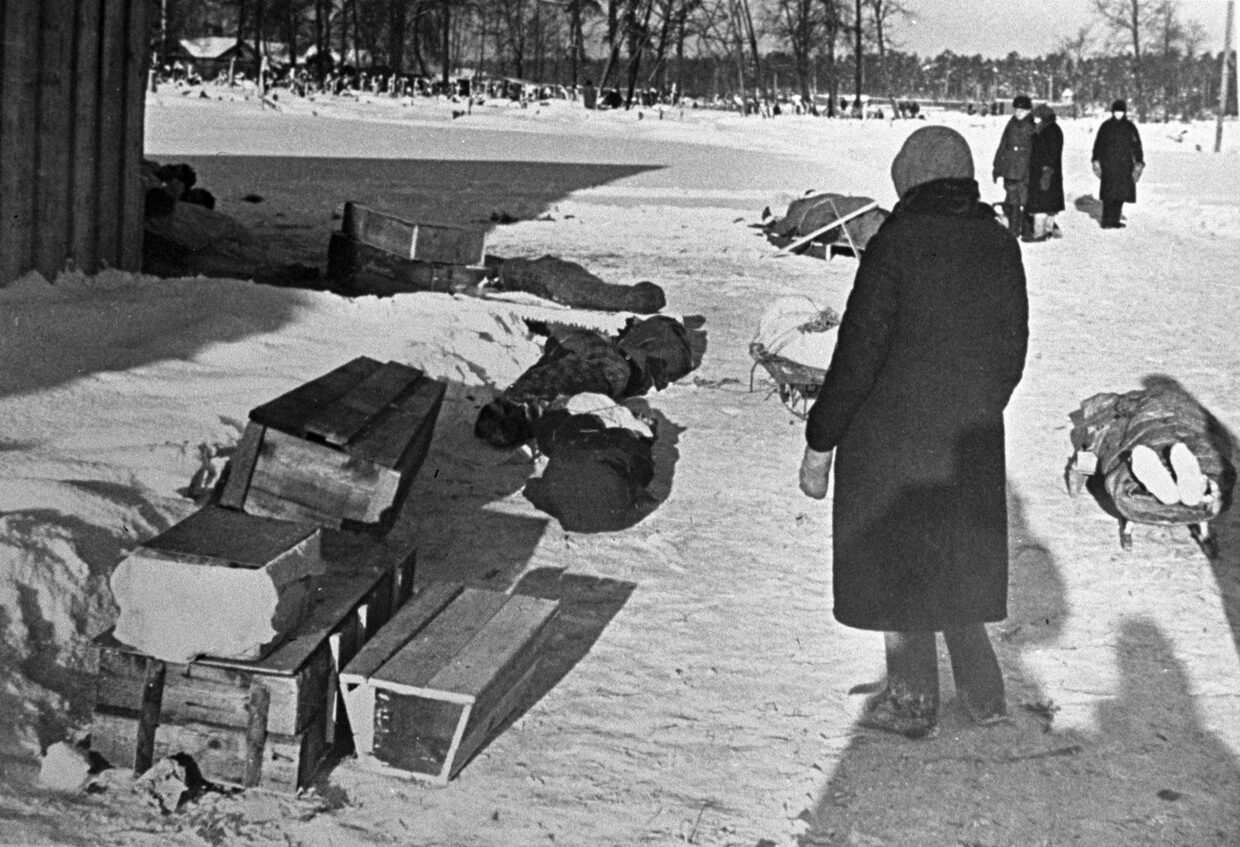
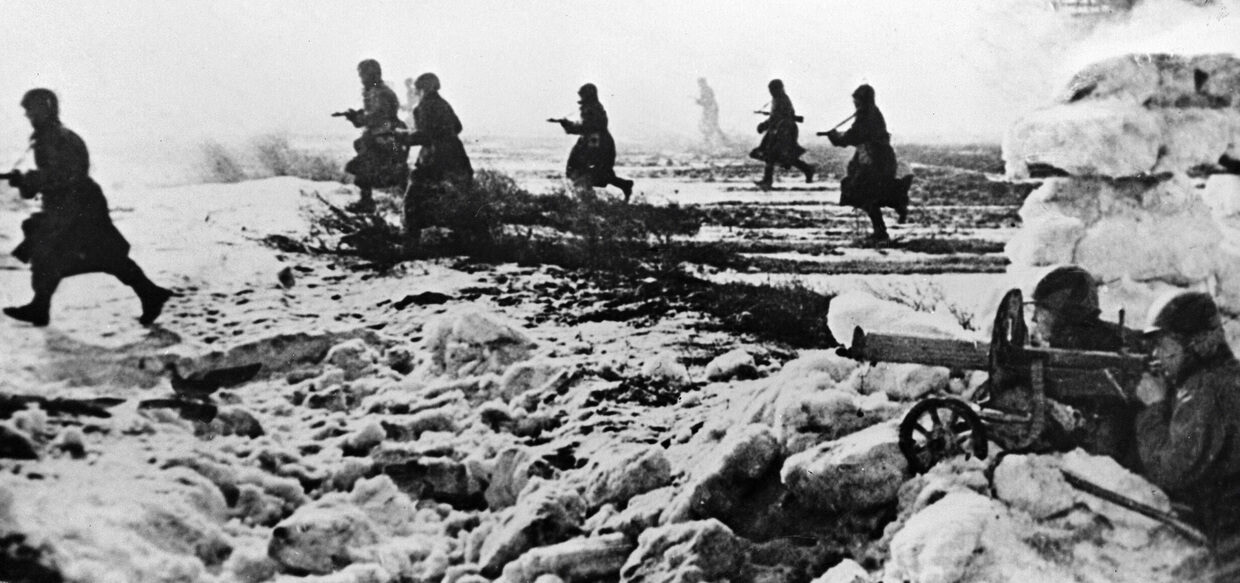



He's like "Bring it, Nazis!"